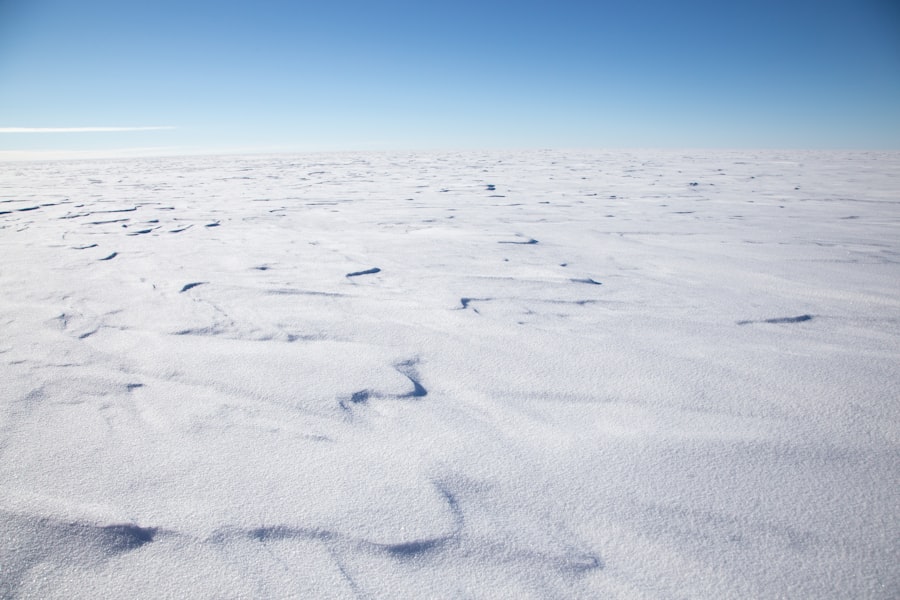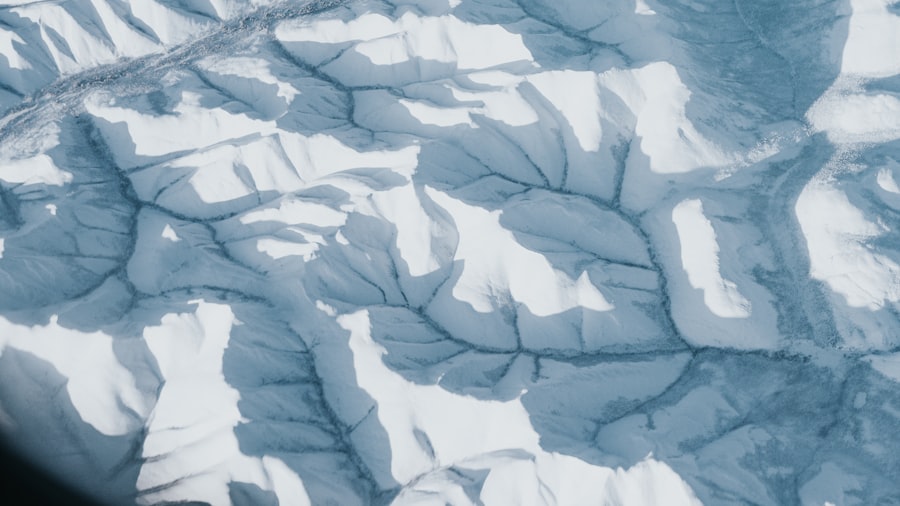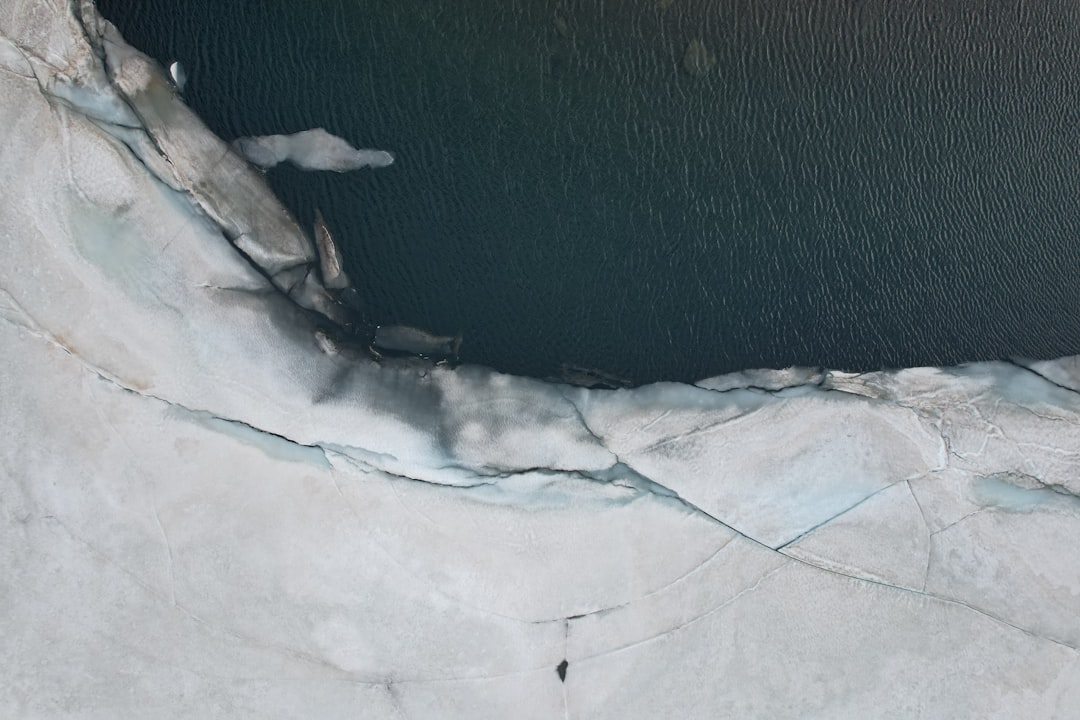The Antarctic Ice Sheet, a colossal expanse of ice covering approximately 14 million square kilometers, plays a pivotal role in the Earth’s climate system. It is the largest single mass of ice on the planet, containing around 60% of the world’s fresh water. As global temperatures rise, the stability of this vast ice sheet is increasingly threatened, leading to concerns about its melting and the subsequent implications for global sea levels.
The melting of the Antarctic Ice Sheet is not merely a local phenomenon; it has far-reaching consequences that extend well beyond the icy continent itself. Recent years have witnessed alarming rates of ice loss from Antarctica, prompting scientists to intensify their research efforts. The dynamics of ice sheet melting are complex and influenced by various factors, including ocean currents, atmospheric conditions, and geological processes.
Understanding these dynamics is crucial for predicting future changes in sea levels and assessing the potential impacts on coastal communities worldwide. As the world grapples with the realities of climate change, the Antarctic Ice Sheet stands as a critical indicator of environmental shifts and a focal point for scientific inquiry.
Key Takeaways
- Antarctic ice sheet melting is a critical indicator of climate change with significant global implications.
- Advanced methods, including satellite monitoring and ice core analysis, are essential for studying ice sheet dynamics.
- Climate change is a primary driver accelerating the melting of the Antarctic ice sheet.
- Melting Antarctic ice contributes substantially to rising global sea levels, threatening coastal communities worldwide.
- International collaboration and mitigation efforts are vital to address and slow down Antarctic ice sheet melting.
The Importance of Understanding Antarctic Ice Sheet Melting
Grasping the intricacies of Antarctic ice sheet melting is essential for several reasons. First and foremost, it provides insight into the broader implications of climate change. The Antarctic Ice Sheet acts as a barometer for global warming; its melting serves as a stark reminder of the urgent need to address rising temperatures and their consequences.
By studying the mechanisms behind ice loss, scientists can better understand how climate change affects not only polar regions but also ecosystems and weather patterns around the globe. Moreover, understanding the melting of the Antarctic Ice Sheet is vital for predicting future sea level rise. Coastal cities and island nations are particularly vulnerable to rising waters, which can lead to devastating flooding and displacement of populations.
By accurately modeling ice sheet dynamics, researchers can provide policymakers with critical information needed to develop effective adaptation strategies. The stakes are high; millions of people live in low-lying areas that could be severely impacted by even modest increases in sea levels.
Methods for Studying Antarctic Ice Sheet Melting

Researchers employ a variety of methods to study the melting of the Antarctic Ice Sheet, each offering unique insights into this complex phenomenon. Satellite observations have become a cornerstone of ice sheet research, allowing scientists to monitor changes in ice mass and surface elevation over time. Instruments such as radar altimeters and gravimeters provide precise measurements of ice thickness and gravitational changes, enabling researchers to track ice loss with remarkable accuracy.
In addition to satellite data, field studies play a crucial role in understanding ice dynamics. Scientists conduct on-the-ground research, drilling into the ice to collect samples and measure temperature profiles. These field expeditions often involve collaboration with international teams, highlighting the global nature of this research endeavor.
By combining satellite observations with ground-based measurements, researchers can create comprehensive models that capture the complexities of ice sheet behavior and predict future changes.
The Role of Climate Change in Antarctic Ice Sheet Melting
| Metric | Value | Unit | Notes |
|---|---|---|---|
| Average Annual Temperature Increase (Antarctica) | 0.12 | °C per decade | Observed warming trend over the last 50 years |
| Ice Mass Loss (2012-2020) | 252 | Gigatonnes per year | Estimated average annual ice loss from Antarctic Ice Sheet |
| Contribution to Global Sea Level Rise | 0.7 | Millimeters per year | From Antarctic ice melt between 2006 and 2015 |
| Rate of Ice Shelf Thinning | 1.5 | Meters per year | Average thinning rate in vulnerable ice shelves |
| Increase in Ocean Temperature near Ice Shelves | 0.03 | °C per year | Warming of Circumpolar Deep Water affecting ice melt |
| Projected Ice Mass Loss by 2100 (RCP 8.5 Scenario) | 3,000 | Gigatonnes | Estimated cumulative loss under high emissions scenario |
| Percentage of Ice Loss Attributed to Climate Change | 90 | % | Based on recent attribution studies |
Climate change is a primary driver of Antarctic ice sheet melting, with rising global temperatures leading to increased rates of ice loss. As the atmosphere warms, it affects both surface temperatures and ocean currents surrounding Antarctica. Warmer air can lead to surface melting during the summer months, while warmer ocean waters can erode ice shelves from below, destabilizing the entire ice sheet.
This dual threat underscores the interconnectedness of atmospheric and oceanic processes in driving ice loss. The feedback mechanisms associated with climate change further complicate the situation. As ice melts, it exposes darker ocean waters or land surfaces that absorb more sunlight, leading to additional warming and further melting—a phenomenon known as albedo feedback.
This cycle creates a self-reinforcing loop that accelerates ice loss and contributes to rising sea levels. Understanding these feedback mechanisms is crucial for developing accurate climate models and predicting future scenarios related to Antarctic ice sheet dynamics.
Recent Discoveries and Findings about Antarctic Ice Sheet Melting
Recent research has unveiled significant findings regarding the Antarctic Ice Sheet’s response to climate change. One notable discovery is the accelerated melting of key glaciers, such as Thwaites Glacier and Pine Island Glacier, which are among the most vulnerable areas of the West Antarctic Ice Sheet. Studies have shown that these glaciers are retreating at an alarming rate due to warm ocean currents infiltrating beneath their ice shelves, leading to increased instability.
Additionally, researchers have identified that certain regions of East Antarctica, previously thought to be relatively stable, are also experiencing unexpected melting. This revelation challenges previous assumptions about the resilience of the East Antarctic Ice Sheet and highlights the need for ongoing monitoring and research. These findings underscore the urgency of understanding how different regions within Antarctica respond to climate change and contribute to overall sea level rise.
The Impact of Antarctic Ice Sheet Melting on Global Sea Levels

The melting of the Antarctic Ice Sheet has profound implications for global sea levels. As vast quantities of freshwater flow into the oceans from melting glaciers and ice shelves, they contribute directly to rising sea levels. Current estimates suggest that if all of Antarctica were to melt completely, global sea levels could rise by more than 60 meters—an outcome that would reshape coastlines and displace millions of people.
Even partial melting poses significant risks; projections indicate that continued ice loss from Antarctica could lead to a sea level rise of several feet by the end of this century. Such changes would have catastrophic effects on coastal cities worldwide, increasing flooding risks and threatening infrastructure. Understanding these impacts is crucial for governments and communities as they develop strategies for adaptation and resilience in the face of inevitable changes.
The Potential Consequences of Continued Antarctic Ice Sheet Melting
The potential consequences of continued melting of the Antarctic Ice Sheet extend far beyond rising sea levels.
Marine life that depends on stable conditions may face challenges as habitats shift or disappear altogether.
Additionally, changes in ocean currents could affect weather patterns globally, leading to more extreme weather events such as hurricanes, droughts, and heavy rainfall. Human populations are not immune to these consequences either. Coastal communities may experience increased flooding, erosion, and saltwater intrusion into freshwater supplies.
The economic implications are staggering; infrastructure damage from rising waters could cost billions in repairs and adaptations. Furthermore, displacement due to flooding could lead to humanitarian crises as people are forced to leave their homes in search of safer ground.
Efforts to Mitigate Antarctic Ice Sheet Melting
In light of the urgent need to address Antarctic ice sheet melting, various efforts are underway to mitigate its impacts. International collaborations focus on reducing greenhouse gas emissions globally, recognizing that climate change is a primary driver of ice loss. Initiatives such as the Paris Agreement aim to limit global warming to well below 2 degrees Celsius above pre-industrial levels, which would help slow down the rate of ice melting.
Additionally, researchers are exploring innovative solutions such as geoengineering—deliberate interventions in Earth’s climate system aimed at counteracting climate change effects. While these approaches remain controversial and require careful consideration, they highlight humanity’s commitment to finding ways to protect vulnerable ecosystems like Antarctica from further degradation.
Collaborative Research and International Efforts to Study Antarctic Ice Sheet Melting
The complexity and scale of studying Antarctic ice sheet melting necessitate collaborative research efforts on an international level. Numerous countries participate in scientific programs dedicated to understanding this critical issue, pooling resources and expertise to advance knowledge about ice dynamics. Organizations such as the Scientific Committee on Antarctic Research (SCAR) facilitate cooperation among nations by coordinating research initiatives and sharing data.
These collaborative efforts extend beyond scientific inquiry; they also foster diplomatic relationships among nations with interests in Antarctica. By working together towards a common goal—understanding and addressing climate change—countries can build trust and promote peaceful cooperation in one of the most remote regions on Earth.
Future Directions for Studying Antarctic Ice Sheet Melting
As research into Antarctic ice sheet melting continues to evolve, several future directions emerge for scientists in this field. One key area is improving predictive models that account for complex interactions between ice sheets, oceans, and atmosphere. Enhanced modeling capabilities will enable researchers to make more accurate projections about future sea level rise and inform policy decisions accordingly.
Another promising avenue involves leveraging advancements in technology, such as artificial intelligence and machine learning, to analyze vast datasets generated by satellite observations and field studies. These tools can help identify patterns and trends that may not be immediately apparent through traditional analysis methods. By harnessing cutting-edge technology alongside traditional research approaches, scientists can deepen their understanding of Antarctic ice dynamics and their implications for global climate systems.
The Urgency of Understanding and Addressing Antarctic Ice Sheet Melting
The urgency surrounding the study of Antarctic ice sheet melting cannot be overstated.
The consequences of continued melting extend beyond environmental concerns; they encompass economic stability, public health, and social equity.
In light of these challenges, collaborative research efforts must be prioritized alongside global initiatives aimed at mitigating climate change. By fostering international cooperation and investing in scientific inquiry, humanity can work towards safeguarding not only Antarctica but also the future of coastal communities around the world facing unprecedented challenges due to rising seas. The time for action is now; understanding and addressing Antarctic ice sheet melting is not just an academic pursuit but a moral imperative for current and future generations.
Recent studies have unveiled intriguing insights into the secrets behind the melting of the Antarctic ice sheet, shedding light on the complex interactions between climate change and ice dynamics. For a deeper understanding of this critical issue, you can explore the article available at this link, which discusses the latest findings and their implications for global sea levels.
WATCH THIS 🛑 The Antarctic City NASA Can’t Erase
FAQs
What is causing the Antarctic ice sheet to melt?
The Antarctic ice sheet is melting primarily due to rising global temperatures caused by human-induced climate change. Warmer air and ocean temperatures lead to increased ice melt and ice shelf thinning.
How much ice is the Antarctic ice sheet losing each year?
Recent studies estimate that the Antarctic ice sheet is losing approximately 150 to 250 billion metric tons of ice annually, contributing to global sea level rise.
Why is the melting of the Antarctic ice sheet important?
The Antarctic ice sheet contains about 60% of the world’s fresh water. Its melting contributes significantly to global sea level rise, which can impact coastal communities and ecosystems worldwide.
What are ice shelves and how do they affect ice sheet melting?
Ice shelves are floating extensions of the ice sheet that act as barriers, slowing the flow of glaciers into the ocean. When ice shelves thin or collapse due to warming, glaciers can accelerate, increasing ice loss.
Are all parts of the Antarctic ice sheet melting at the same rate?
No, melting rates vary across Antarctica. West Antarctica and the Antarctic Peninsula are experiencing more rapid ice loss compared to East Antarctica, which remains relatively stable or is gaining ice in some areas.
How do scientists study the melting of the Antarctic ice sheet?
Scientists use satellite observations, airborne surveys, ice core sampling, and climate models to monitor changes in ice mass, thickness, and movement to understand melting patterns and predict future changes.
Can the Antarctic ice sheet melting be reversed?
Reversing the melting would require significant reductions in global greenhouse gas emissions to limit further warming. However, some ice loss may be irreversible on human timescales due to feedback mechanisms.
What impact does Antarctic ice sheet melting have on global sea levels?
Melting of the Antarctic ice sheet is one of the largest contributors to global sea level rise, potentially raising sea levels by several meters over centuries if melting continues unchecked.
Are there any natural processes that affect Antarctic ice sheet melting?
Yes, natural factors such as volcanic activity beneath the ice, ocean currents, and atmospheric variability can influence ice sheet stability, but current rapid melting is primarily driven by human-induced climate change.
What are scientists discovering about the “secrets” of Antarctic ice sheet melting?
Recent research is uncovering complex interactions between ocean warming, ice shelf dynamics, and subglacial geology that control melting rates, helping improve predictions of future ice loss and sea level rise.
